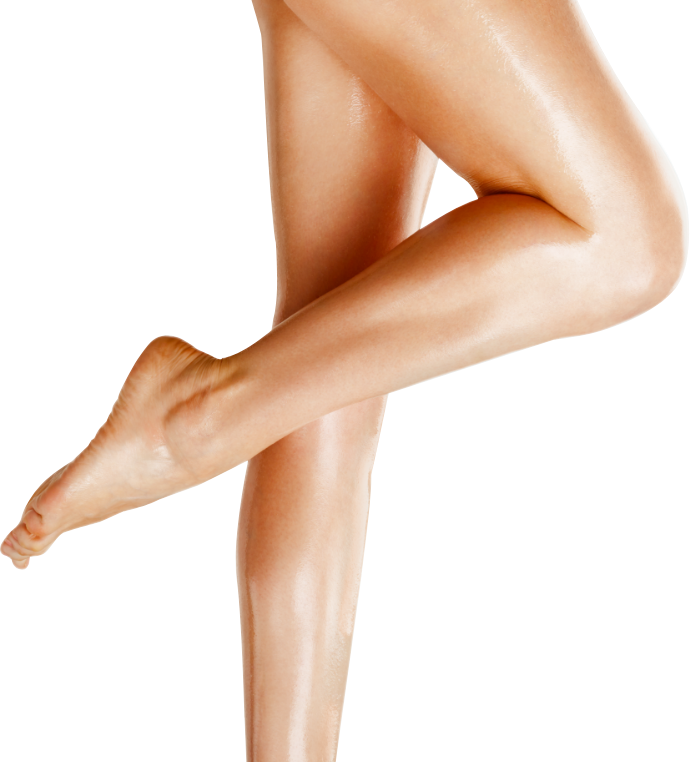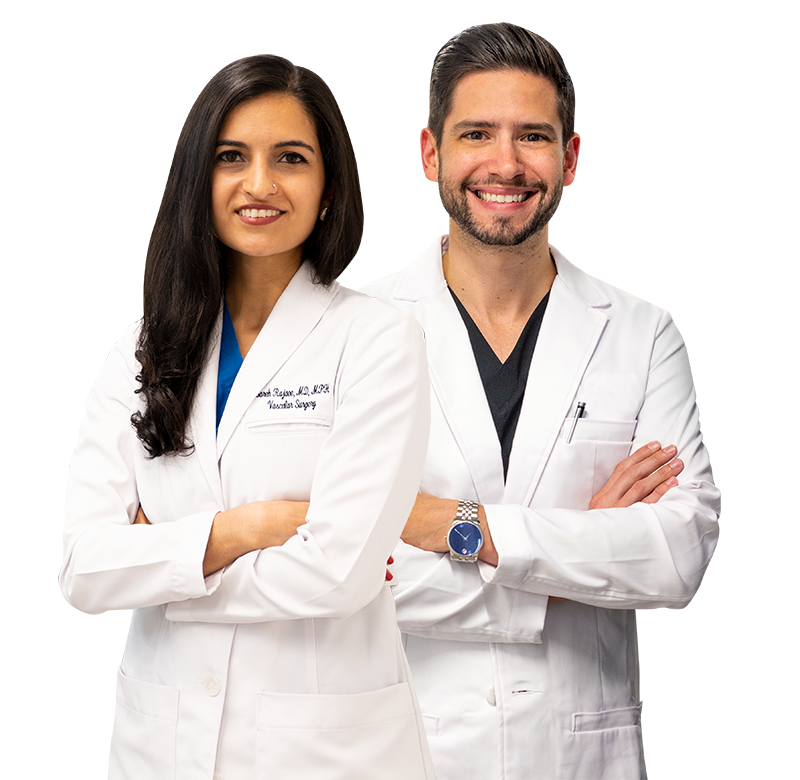What Does a Vein Clinic Do?
What does a vein clinic do?
Vein clinics are medical centers specializing in the prevention, diagnosis, and treatment of vascular problems, i.e., disorders related to the veins, such as spider veins, varicose veins, and chronic venous insufficiency. Vein clinics diagnose and treat the root cause of your vein problems and remove the superficial spider veins and varicose veins. However, you must find a reliable vein clinic that provides comprehensive vein care for the root cause of your vein problems rather than just cosmetic treatments.
Generally speaking, most vein clinics diagnose and treat conditions caused by chronic venous insufficiency, the root cause of most vein problems. Chronic venous insufficiency is a medical condition wherein your vein valves collapse. In healthy veins, the valves act as one-way doors that facilitate smooth blood circulation to the heart, resisting gravitational force. When your vein valves collapse, blood flows backward and accumulates in the leg veins, leading to vascular dilation and a series of escalating symptoms.
The following is an overview of the conditions that vein clinics may treat:
- Leg Heaviness: If your legs feel extremely heavy and achy, especially at the end of the day or after long periods of sitting or standing, you may have underlying vein disease.
- Restless Leg Syndrome: This is a condition wherein you have an insatiable urge to move and shake your legs, especially at the end of the day or after long periods of inactivity. This is often caused by chronic venous insufficiency.
- Frequent Leg Cramps: Most people experience muscle cramps (sudden involuntary muscle contractions) once in a while. However, if you experience frequent leg cramps at the end of the day or after long periods of sitting, you may have underlying venous insufficiency.
- Leg Swelling: This is a condition wherein your lower legs and ankles are swollen because of the accumulation of blood or fluids in your leg veins. Treating chronic venous insufficiency can alleviate persistent leg swelling.
- Spider Veins: These are dense clusters of reddish blood vessels that appear just underneath your skin’s surface, usually resembling spider webs. They’re often caused by underlying vein disease, and they can be treated with sclerotherapy.
- Varicose Veins: These are large blood vessels that bulge out of your skin’s surface in a tangled and twisted form resembling tree branches. They’re indicative of advanced chronic venous insufficiency, the root cause of most vein problems.
- Leg Ulcers: Lack of proper blood circulation in your legs prevents wounds from healing effectively, leading to non-healing leg wounds (ulcers) on your skin’s surface.
- Deep Vein Thrombosis: Untreated chronic venous insufficiency may eventually lead to blood clots in the leg veins. Besides being painful, deep vein thrombosis is extremely dangerous. The blood clots may break and travel to the lungs, leading to a potentially fatal pulmonary embolism.
Our spider vein and varicose vein treatment centers in California specialize in minimally invasive treatments for spider veins and varicose veins. We always diagnose the root cause of your vein problems to curate personalized vein treatment plans just for you. If you have the signs and symptoms of vein disease, please schedule an appointment at your nearest vein treatment clinic in San Diego or San Jose, CA.
THIS IS WHERE WE PUT THE TITLE
Sed ut perspiciatis unde omnis iste natus error sit voluptatem accusantium our locations totam rem aperiam, eaque ipsa quae ab illo inventore veritatis et quasi architecto beatae vitae dicta sunt explicabo. Nemo enim ipsam voluptatem quia voluptas sit aspernatur aut odit aut fugit, sed quia consequuntur magni dolores eos qui ratione voluptatem sequi nesciunt. Neque porro quisquam est, qui dolorem ipsum quia dolor sit amet, consectetur, adipisci velit, sed quia non numquam eius modi Learn more about that topic here
What happens at a varicose vein consultation?
During your initial varicose vein consultation, the vein doctor will understand your symptoms and goals and determine if you may have chronic venous insufficiency. The vein doctor will examine your leg veins and ask about your symptoms, such as leg heaviness, restless leg syndrome, and leg swelling. The vein specialist will also review your medical history and ask if you have a family history of vein problems — this will help them understand the possible risk of vein disease. After the initial consultation, the vein doctor will schedule an ultrasound scan.

How are vein problems diagnosed?
Vein problems are officially diagnosed using advanced vascular imaging tests, such as duplex ultrasound. During the duplex ultrasound scan, the vein doctor will channel ultrasound energy into your legs via a handheld device to visualize the internal components of your veins on a computer screen. The ultrasound device will visualize the direction of blood flow in your leg veins. Backward blood circulation and accumulated blood in leg veins reveal chronic venous insufficiency.
What are my vein treatment options?
You should only look for vein treatment clinics specializing in minimally invasive vein treatments. In the past, vein problems were treated with surgical procedures, such as vein ligation and vein stripping. Thanks to recent advancements, surgical treatments are now considered obsolete and needlessly risky. Minimally invasive vein treatments are safer, more effective, and they conclude within an hour with no downtime, allowing you to resume your daily activities immediately.
The following are your minimally invasive vein treatment options:
- Radiofrequency Ablation: The vein doctor channels thermal energy into the diseased vein to make it collapse and reroute the accumulated blood into healthier veins.
- Endovenous Laser Ablation: The vein doctor channels laser energy into the diseased vein to make it collapse and reroute the accumulated blood into healthier veins.
- VenaSeal: The vein doctor injects a medical glue into the diseased vein to seal it shut, restoring effective blood circulation to the heart.
- ClariVein: The vein doctor inserts a specialized catheter with a rotating tip into the diseased vein to damage its walls while injecting a sclerosant medicine, fusing it shut.
- Ambulatory Phlebectomy: The vein specialist makes small incisions to extract superficial varicose veins from your legs.
- Sclerotherapy: The vein specialist injects a sclerosant solution into your spider veins to turn them into hardened scar tissues eventually absorbed by the body.
Please schedule an appointment with your nearest vein treatment clinic in California to explore your vein treatment options.
CA Vein Doctors
Meet our team of California Vein Treatment Specialists
Vein Treatments are covered by most major medical insurances, including Medicare. Call us today to verify your insurance for FREE >

Contact us
CALL US
Speak instantly with one of our team members; they will answer any questions you may have regarding insurance coverage, booking an appointment and our vein treatment locations. (858) 988-3266
BOOK APPOINTMENT
Visit our Book Appointment page and instantly request an appointment at the California vein Tretment. We offer Free Insurance Verification before your appointment.
GET DIRECTIONS
Learn how to get to one of our California vein centers in San Diego & San Jose